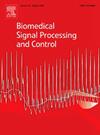核磁共振谱聚类的深度表示学习
IF 4.9
2区 医学
Q1 ENGINEERING, BIOMEDICAL
引用次数: 0
摘要
核磁共振(NMR)光谱学对于分子结构解析、药物发现和生物医学研究至关重要,因为它可以识别光谱模式和化合物相似性。然而,传统的聚类方法在抗化学位移变化、峰值强度波动和噪声方面存在鲁棒性问题,限制了它们在复杂核磁共振数据集中的有效性。为了解决这些挑战,我们提出了一个将注意力机制与双向长短期记忆自编码器相结合的新框架。该方法通过将自适应局部特征提取与深度表征学习相结合,提取核磁共振谱的鲁棒低维表征。我们的方法能够在保留关键化学信息的同时有效地聚类不同的光谱区域。在合成数据集和真实数据集上的综合实验表明,该框架在聚类精度和表示质量方面明显优于传统技术。这些发现突出了其在增强核磁共振光谱分析和分子表征方面的实用价值。本文章由计算机程序翻译,如有差异,请以英文原文为准。
Deep representation learning for Nuclear Magnetic Resonance spectral clustering
Nuclear Magnetic Resonance (NMR) spectroscopy is essential for molecular structure elucidation, drug discovery, and biomedical research, as it enables the identification of spectral patterns and compound similarities. However, traditional clustering methods struggle with robustness against chemical shift variations, peak intensity fluctuations, and noise, limiting their effectiveness in complex NMR datasets. To address these challenges, we propose a novel framework that combines an attention mechanism with a bidirectional long short-term memory autoencoder. This approach extracts robust, low-dimensional representations of NMR spectra by integrating adaptive local feature extraction with deep representation learning. Our method enables effective clustering across diverse spectral regions while preserving critical chemical information. Comprehensive experiments on both synthetic and real-world datasets demonstrate that this framework significantly outperforms conventional techniques in clustering accuracy and representation quality. These findings highlight its practical utility for enhancing NMR spectral analysis and molecular characterization.
求助全文
通过发布文献求助,成功后即可免费获取论文全文。
去求助
来源期刊

Biomedical Signal Processing and Control
工程技术-工程:生物医学
CiteScore
9.80
自引率
13.70%
发文量
822
审稿时长
4 months
期刊介绍:
Biomedical Signal Processing and Control aims to provide a cross-disciplinary international forum for the interchange of information on research in the measurement and analysis of signals and images in clinical medicine and the biological sciences. Emphasis is placed on contributions dealing with the practical, applications-led research on the use of methods and devices in clinical diagnosis, patient monitoring and management.
Biomedical Signal Processing and Control reflects the main areas in which these methods are being used and developed at the interface of both engineering and clinical science. The scope of the journal is defined to include relevant review papers, technical notes, short communications and letters. Tutorial papers and special issues will also be published.
 求助内容:
求助内容: 应助结果提醒方式:
应助结果提醒方式:


